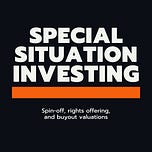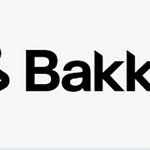Welcome to Episode 105 of Special Situation Investing.
Reading through the myriad write-ups on Value Investors Club last weekend, I scrolled past a name I’d never heard before, The Tel-Aviv Stock Exchange (TASE). Value Investors Club member Krusty75 did a fantastic job with the write-up and we encourage each of you to review it at the link provided. Because we’ve done so much work on exchanges in the past, specifically Episodes 46, 95, and 96, I was immediately intrigued and started investigating the company for myself.
The Tel-Aviv Stock Exchange (TASE) is Israel’s only stock exchange. It’s wholly owned subsidiaries include the Tel-Aviv Stock Exchanges Clearing House, the MAOF (Derivatives) Clearing House, and the Tel-Aviv Stock Exchange Nominee Company, which provides the clearing and settlement infrastructure for Israeli securities registration services. In its July 2019 IPO, TASE transitioned from a not for profit and largely bank owned exchange to a for profit publicly traded corporation. The exchange traces its roots all the way back to the “Exchange Bureau for Securities” which was founded by the Anglo-Palestine Bank in 1935 and which traded securities for just one hour daily.
As a business, TASE benefits from all of the fundamental advantageous that act as a tailwind to other exchanges. It can “cross sell” products whereby it charges a fee to execute a trade and then sells data about the trade back to market participants in a separately packaged product called market research. It can invent and launch new products using its existing license and infrastructure at very low incremental cost to the business and furthermore it benefits from trading volume and not trading direction allowing it to thrive in both declining and growing markets. Finally, because it is licensed by the government, it operates within a legal monopoly.
Beyond the benefits that accrue to exchanges generally there are several specific advantageous that could act as catalyst to the valuation of TASE itself over the next several years. First, TASE only transitioned from a not-for-profit to a for profit corporation when it went pubic in 2019. For most of its history the primarily bank owned exchange operated for the benefit of its owners and not as a for profit venture. This incentive structure saw TASE offer many of its services for free or for below market pricing and further means that there is room for margin expansion going forward as management slowly brings their pricing up to levels comparable to other national exchanges.
Additionally, the not-for-profit nature of pre-2019 TASE fostered an inefficient operating model that, once streamlined, should result in cheaper and more efficient operations in the years to come. These changes will of course take time and have to be incremental but they offer investors a valuation lever not available in more established exchanges, such as ICE and CME, where the profit motive has acted on pricing and process efficiency for decades.
The relatively tiny market cap of TASE offers a further advantage to investors given that the company could double its $432 million market cap at least seven times before approaching the New York Stock Exchange’s $65 billion valuation. For an investor to double his money seven times buying the New York Stock Exchange (ICE), the exchange would have to see its value rise from $65 billion today to an astonishing $8.3 trillion in the future. While that valuation is possible given enough monetary inflation and economic growth, it’s difficult to imagine it being realized any time in the near future.
Another valuation lever available to TASE comes directly from its capital structure. TASE initial capital raise valued each of the company’s 100,000,000 shares at 5.00 ILS each for a 500,000,000 ILS total market cap. 19% of the capital structure was purchased by a US-based company called Manikay under the stipulation that any shares they sold entitled them to a maximum proceed of 5.08 ILS per share with any excess profits above that level going directly to TASE. In essence, this is a delayed capital raise for TASE where instead of receiving capital directly from investors at the initial public offering the company receives it only after Manikay sells its shares and receives only the difference between the 5.08 ILS upper cap on Manikay’s profits and the actual sale price of the shares. The sale of this 19% block of stock represents a large potential capital infusion to an already debt free, high margin business. The excerpt below from TASE Q4 2019 financial statement outlines this financial arrangement in detail:
During the second half of 2019, the shareholders realized 2,793,528 shares held by them prior to the date of approval of the restructuring arrangement in TASE, in consideration of approximately NIS 28.1 million. As stated in note 1B above and in accordance with the TASE Restructuring Law, the consideration in excess of NIS 5.08 per share is to be transferred to TASE. Accordingly, an amount approximately NIS 13.8 million of the aforesaid sale consideration was transferred to TASE. The aforesaid amount was carried directly to the equity of the Company in its financial statements as of December 31, 2019. As of December 31, 2019, to the best of the Company’s knowledge, 19,488,973 shares are held by shareholders that had held them prior to the date of approval of the restructuring arrangement in TASE. The price of the share as of March 22, 2020 (shortly before the financial statements’ approval date) was NIS 8.12. In accordance with the TASE Restructuring Law and as stated in note 1B above, if the shareholders should realize the shares that are held by them, the consideration in excess of NIS 5.08 per share will be transferred to TASE to be used for the purposes stipulated in the Law. Such excess consideration will be carried directly to the equity of the Company.
TASE 2023-2027 strategic plan outlines a further catalyst to future growth. In the plan management details several growth areas that they hope to focus on in the coming years, not least of which is in the digital asset space. Regulated exchanges are already licensed and equipped to facilitate financial market transactions and it’s relatively easy for them to add new products to their list of services without incurring added costs. TASE’s Q4 2019 financial report highlighted their ability to add new services with minimal marginal cost in he following way:
The provision of a central financial market infrastructure for trading investment instruments, with high levels of capacity, flexibility and reliability, pursuant to the required business and regulatory standards, involves a high fixed cost. After this investment, the marginal cost of executing associated or supplementary actions is relatively low. Therefore, TASE and the Clearing Houses benefit from tangible advantages in relation to the development and penetration of products and services that are complementary to and/or associated with their trading and clearing activities.
An example from CME Group highlights the above point. There was a time when bitcoin futures weren’t even imagined by investors let alone traded by them, and yet bitcoin futures are now a meaningful and increasing number of the transactions executed by CME. Extrapolating this to TASE, we can imagine a time in the not so distant future when entirely new revenue streams will be added to the company’s top line in the form of smart contracts, crypto currency transactions, and digital tokens. Furthermore, blockchain technologies could allow for better tracking and settlement by the exchange along with greater efficiency of operations. For a much deeper dive into this topic, we encourage our listeners to check out the Q3 2023 quarterly update from Horizon Kinetics. They do compelling and creative work and their thoughts on the advantageous of the exchange business model are no exception.
Based on our initial TASE review, we think we’ll be diving even deeper into the company over the next few months. Like rating agencies, royalty companies, and brokers, financial exchanges benefit from a unique set of characteristics that predispose them to become great investments. They operate in monopoly and duopoly markets and are key partners with the governments that regulate them. Their protected market, ability to add new services at low marginal costs, and directionally neutral ability to profit from market volatility, help to keep their margins high and their topline growing.
According to TASE 2023-2027 strategic plan, the company aims to grow revenue by 10-12% annually over that time period. Additionally, the company has plenty of room for margin expansion given that they’ve started from a low base relative to other exchanges. TASE margins have hovered in the low 30% range over the last several years against mid 50% margins for ICE and margins north of 80% for CME. As TASE improves operational efficiencies and expands into new markets, its margins should grow to be more in line with other exchanges around the globe. TASE unique ability to grow margins and revenue from a lower base than its peers offers investor an added margin of safety in an already superior class of business.
Given that TASE valuation is in line with its peers despite its longer runway, room for margin expansion, and revenue growth, it should offer investors superior returns over other more established exchanges for years to come. Researching the company is a bit more challenging than researching a US-based company due to filing differences and currency conversions, but we believe there is enough value here to warrant the extra effort.
With that we come to the end of another episode of the show. We would love to have provided more on this interesting investment opportunity but alas there are only so many hours in the day and this is, after all, Thanksgiving week here in the United States. So given the fact that neither my co-host nor I are paid for our work on the podcast I’m going to wish you a happy Thanksgiving weekend and sign off. As always, we thank you for all of the support and engagement and we will see you again next week with another actionable investment write-up.















Share this post